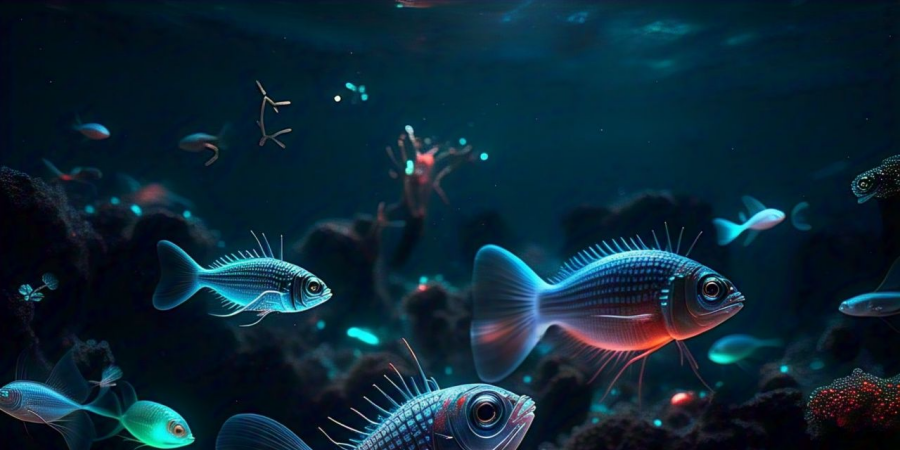

The Magical Glow of Bioluminescence
Hello , I hope everyone is doing well and exploring new things.Today I would like to explore the fascinating world of bioluminescence and share knowledge on it with all my friends.
**The Magical Glow of Bioluminescence**
Bioluminescence is a natural phenomenon where living organisms emit light through chemical reactions within their bodies. Found in various terrestrial and aquatic species, this glowing spectacle is a perfect blend of beauty and science, often mesmerizing those fortunate enough to witness it. From the deep-sea depths to forest floors, bioluminescence is a testament to nature's creativity and adaptability.
At its core, bioluminescence results from a chemical reaction between a light-emitting molecule called *luciferin* and an enzyme called *luciferase*. This reaction typically requires oxygen and sometimes other cofactors, depending on the organism. The resulting glow can serve various purposes, such as attracting prey, deterring predators, or facilitating communication.
One of the most iconic displays of bioluminescence is seen in marine environments. Approximately 80% of deep-sea creatures exhibit some form of bioluminescence, compensating for the complete absence of sunlight at such depths. Among them, the anglerfish uses its bioluminescent lure to attract prey, while the hatchetfish employs counter-illumination to camouflage itself from predators. Similarly, dinoflagellates, microscopic plankton, create glowing waves when disturbed, illuminating oceans with ethereal light during the night.
On land, fireflies are the most well-known bioluminescent organisms. Their rhythmic flashes are not just enchanting but also serve as mating signals. Males and females communicate through specific light patterns to find compatible mates. Another terrestrial example is the bioluminescent fungi, often called "foxfire," which glows faintly in forested areas, adding an almost mythical quality to the landscape.
Bioluminescence has several ecological roles. In some cases, it acts as a defense mechanism. For instance, certain squid species eject glowing ink to confuse predators, giving them a chance to escape. In other cases, it aids in predation, as seen in the deep-sea dragonfish, which uses light to lure unsuspecting victims into its jaws. Even communication is made possible in the pitch-black depths of the ocean, with species signaling their presence or territory through bioluminescent displays.
The study of bioluminescence has also inspired scientific innovation. For example, researchers have used bioluminescent markers in genetic and medical studies to track biological processes in real time. These applications extend to environmental monitoring, where bioluminescent organisms can detect pollution levels.
Witnessing bioluminescence in person is an unforgettable experience. The glow of a moonlit beach lit by dinoflagellates or the flickering of fireflies in a quiet forest evokes a sense of wonder and connection with nature. It reminds us of the intricate and often hidden mechanisms that make life on Earth so unique.
In essence, bioluminescence is more than just a light show. It is a critical survival tool, a medium of communication, and a source of endless fascination. By studying and preserving bioluminescent habitats, we not only unlock the secrets of these glowing marvels but also deepen our appreciation for the incredible diversity of life on our planet.
I would like to share more about it if you guys find intersting and comment on my blog post.
Thankyou !! Have a great day ahead.
